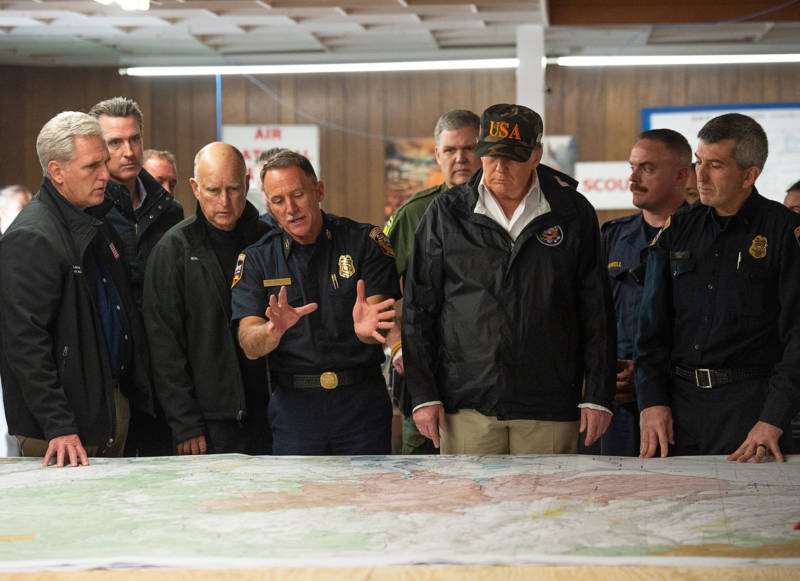After three decades of firefighting and managing some of the worst blazes in California history, Ken Pimlott, chief of the California Department of Forestry and Fire Protection, is retiring today.
As Pimlott reflects on his 30 years of fire management, he says California currently finds itself with the “dubious distinction of breaking records” in terms of wildfire prevalence, intensity and deadliness.
In 2017, 1.2 million acres of land were destroyed by almost 9,000 wildfires, including the massive Thomas and Tubbs infernos. By the time the Thomas Fire was 100 percent contained, it had set the record for the largest wildfire in modern California history. It took less than a year for another fire to break that record.
This year saw the Woolsey Fire and the Camp Fire. The deadliest and most destructive blaze in modern California’s history, the Camp Fire destroyed almost 14,000 homes and claimed at least 86 lives. Between those two blazes alone, plus the Hill Fire, insurance claims have risen to $9 billion.
The damage — physically and psychologically — is staggering.
While Cal Fire explains that there are marked ecological benefits to forest fires such as soil nourishment, the creation of new habitats for animals, the elimination of disease and seed regeneration, Pimlott says that in the past three of four years, the fires have far exceeded their natural cycles and are damaging, “not just the wildlife in the watershed, but are having significant impact on communities.”

Despite President Trump’s accusations that California’s vulnerability to recent fire decimation is due to botched forest management, Pimlott says California has invested more as a state than any other over the next five years, committing $1 billion in cap-and-trade funding specifically slated for forest health, fire prevention, fuels treatment and public education.
There is no reason for these massive, deadly and costly forest fires in California except that forest management is so poor. Billions of dollars are given each year, with so many lives lost, all because of gross mismanagement of the forests. Remedy now, or no more Fed payments!
— Donald J. Trump (@realDonaldTrump) November 10, 2018
“We’ve been ramping up the state’s capabilities — along with our local government partners and the federal firefighting agencies — to respond,” says Pimlott. “We have been continuing to invest in [fire prevention], but understanding that just every year the intensities continue to increase.”
Despite rainfall and weather patterns in the past two years that have given California a respite of moisture, the vegetation remains “critically dry.” Cal Fire’s herculean financial and infrastructural efforts remain no match for the unprecedented fires caused by climate change.
“Firefighters are facing the impacts of climate change every day, literally,” Pimlott says.
“They’re the indicators, they’re the ones that are deployed for months at a time. They’re the ones that are experiencing these increased fire conditions and you can go out and talk to any experienced firefighter and they will tell you…things have significantly changed over the last several decades.”
As the ubiquity of these blazes isn’t likely to change, he says we have to learn from past fires and continue to take a hard look at determining where houses can be built in the future.
Pimlott says that the state will absolutely continue to build — there are, after all, 40 million people in California who need places to call home — and there is a commitment to rebuild Paradise. In the wake of these fires, newfound focus is being put on land use planning, identifying high fire hazard severity zones, building codes, construction, placement in the urban interface and even cluster development to maximize protection.
“There just may be areas in drainage or that are critical fire corridors that intensify winds that it will make it impossible to protect a structure,” he continues. “How do we build smartly to make sure we’re not putting people in harm’s way? There’s a lot to look at.”
Pimlott explains that the state is not interested in dictating ordinances or legislation down to local government, but “we’re going to be bringing everyone along and having those hard conversations.”
